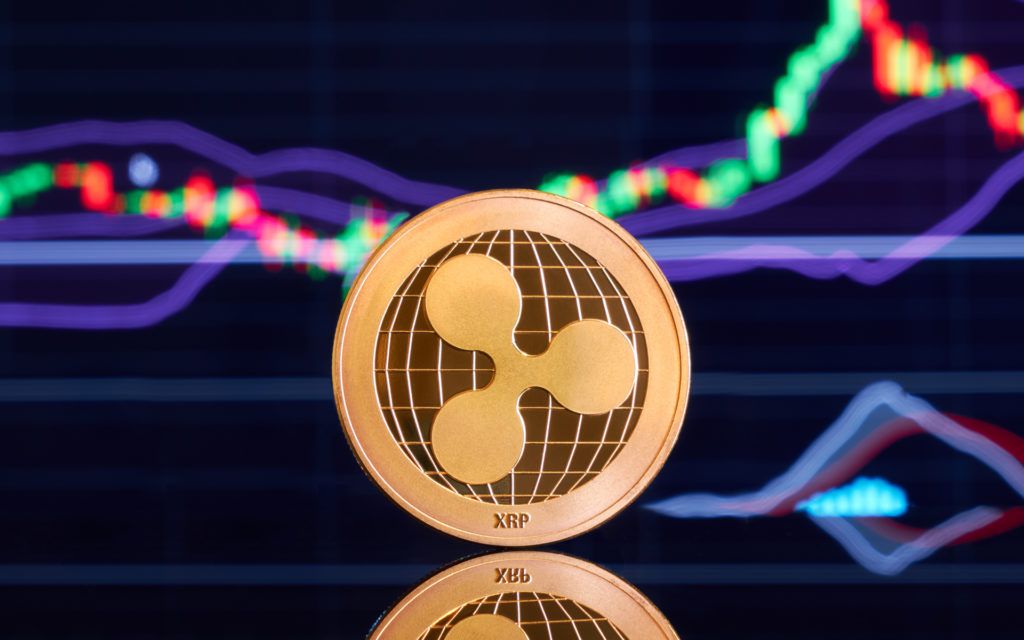When it comes to cryptocurrencies, the major statistic used as an indicator of success has traditionally been the rate of growth year-on-year. This, however, only tends to look at the growth between yearly peaks or the achievement of a new all-time-high ever year. In contrast, while yearly highs have recently failed to increase yearly, the absolute minimum price of most cryptocurrencies has followed a positive trend since at least 2015.
Following a year of almost perpetual decline, the vast majority of cryptocurrencies have experienced dramatic losses from their all-time high. Bitcoin alone has seen more than 84 percent of its market capitalization wiped out since Dec 2017, while other major cryptocurrencies have seen even worse.
However, simply looking at the disparity between the highest ever value and the current value only shows one side of the picture. Instead, taking a bottom-up approach, we find that many cryptocurrencies are indeed showing signs of strength, with their yearly low gradually increasing year on year — even in years of significant absolute decline.
Looking at the largest cryptocurrencies by market capitalization, we find this trend has not been broken for at least the past four years. Note that this list only considers cryptocurrencies at least four years old, although both Bitcoin Cash and EOS have maintained this trend for the past two years. It appears that, while many cryptocurrencies have failed to attain an all-time high consecutively, the bare minimum price individuals are willing to sell their holdings at has increased yearly. These individuals likely continue to hold as they perceive the current worth of their portfolio as undervalued, hence being willing to sell until a more appropriate value is achieved.Don't look at ATH's, look at yearly lows. That will tell you the growth in hodlers.
— Ben (@Ben__Af) January 1, 2019
2012 – $4
2013 – $65
2014 – $200
2015 – $185
2016 – $365
2017 – $780
2018 – $3200
That tells you the growth in the people who won't sell at any price.#btc #Crypto #Bitcoin
Bitcoin (BTC)
In 2018, Bitcoin suffered a drastic decline in both value and market capitalization, though still held stronger than the vast majority of cryptocurrencies. Through the last several years, Bitcoin has consistently improved its yearly minimum value and has not fallen below $185 since 2015. In the past four years alone, the minimum yearly BTC value has grown by more than 1,700 percent from its lowest point of $185 in 2015, through $365 and $780 in 2016 and 2017 respectively, up to a 2018 minimum of $3200.
Ethereum (ETH)
In the last four years, Ethereum has managed to consistently improve on its lowest minimum value, clocking in as low as 42 cents in 2015, increasing to 86 cents in 2016, $7.09 in 2017 and, finally, $83 in 2018. Had you purchased ETH at its lowest value in 2015 and sold just a year later at 2016’s lowest value, you would have a netted yourself a solid 104 percent profit. Holding for each additional year would have yielded at minimum an eight-fold return on your investment, seeing your portfolio grow by a minimum of 23,800 percent after holding for four years.
Ripple (XRP)
Like most other cryptocurrencies, XRP had a tumultuous 2018, losing as much as 93 percent of its value in the last 12 months after collapsing from its $3.81 high last January. Switching our focus to XRP’s lowest yearly values, we see quite the different story. Beginning at just 0.4 cents in 2015, the minimum price gradually increased year-on-year, growing by 25 percent to 0.5 cents in 2016, to slightly higher in 2017, before rocketing to a yearly low of 25 cents in 2018. Had you purchased XRP at its lowest value in 2015, and sold at its lowest value in 2018, you would have made a staggering 6,250 percent ROI.
Stellar (XLM) and Litecoin (LTC)
Both Stellar and Litecoin have also witnessed similar growth in recent years, consistently managing to improve on their yearly minimums for the past several years. Had you purchased Stellar at its 2015 minimum of 0.16 cents, you could have lost 6 percent selling it at the 2016 minimum. However, had you held it until 2017, you would have made 8 percent profit. Things really changed in 2018 as the minimum value rose to 9.3 cents, a massive 6,000 percent growth since 2015. Litecoin, on-the-other-hand, witnessed even more impressive growth — rising from a minimum of 11 cents in 2015, to $2.98 in 2016, $3.61 in 2017, and $22.82 in 2018. Had you bought and sold between any two yearly minimums, you would have made at least 21 percent and as much as 2,700 percent profit. What do you think is driving up the minimum value of these major cryptocurrencies? Are the number of hodlers (holders) simply increasing, or is it something else? Let us know your thoughts in the comments below!
Top crypto platforms in the US
Disclaimer
In adherence to the Trust Project guidelines, BeInCrypto is committed to unbiased, transparent reporting. This news article aims to provide accurate, timely information. However, readers are advised to verify facts independently and consult with a professional before making any decisions based on this content. Please note that our Terms and Conditions, Privacy Policy, and Disclaimers have been updated.

Daniel Phillips
After obtaining a Masters degree in Regenerative Medicine, Daniel pivoted to the frontier field of blockchain technology, where he began to absorb anything and everything he could on the subject. Daniel has been bullish on Bitcoin since before it was cool, and continues to be so despite any evidence to the contrary. Nowadays, Daniel works in the blockchain space full time, as both a copywriter and blockchain marketer.
After obtaining a Masters degree in Regenerative Medicine, Daniel pivoted to the frontier field of blockchain technology, where he began to absorb anything and everything he could on the subject. Daniel has been bullish on Bitcoin since before it was cool, and continues to be so despite any evidence to the contrary. Nowadays, Daniel works in the blockchain space full time, as both a copywriter and blockchain marketer.
READ FULL BIO
#News about Bitcoin (BTC)
#Altcoin Analysis
#Bitcoin (BTC) Analysis
#News About Ethereum (ETH)
#Altcoin news
#Ripple (XRP) News
#Technical Analysis Ethereum
#Litecoin (LTC) News
Sponsored
Sponsored

